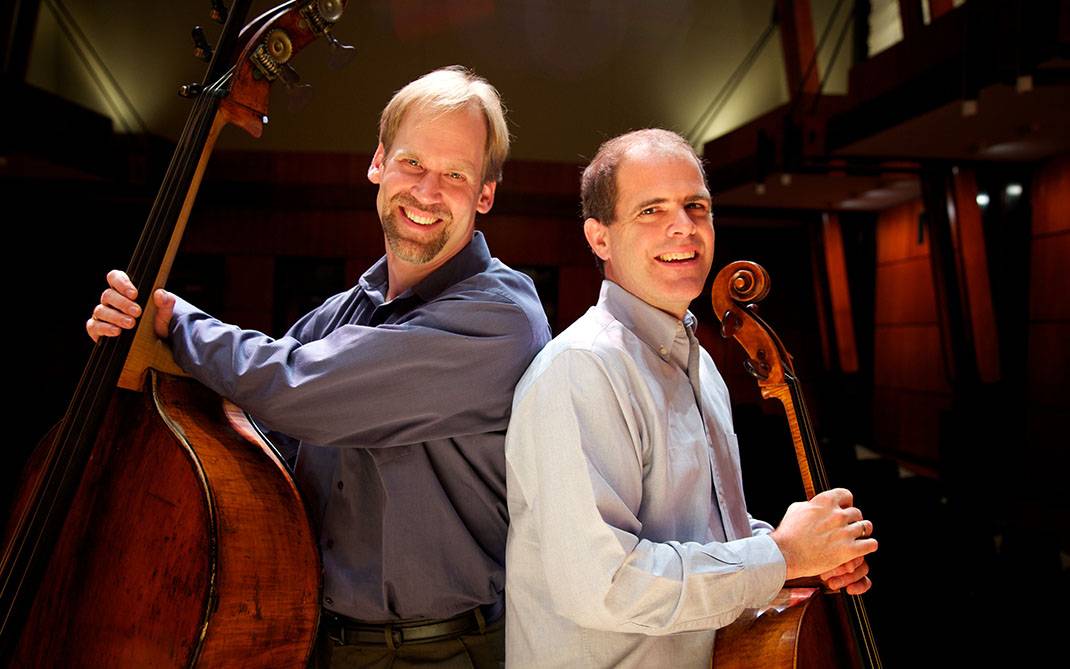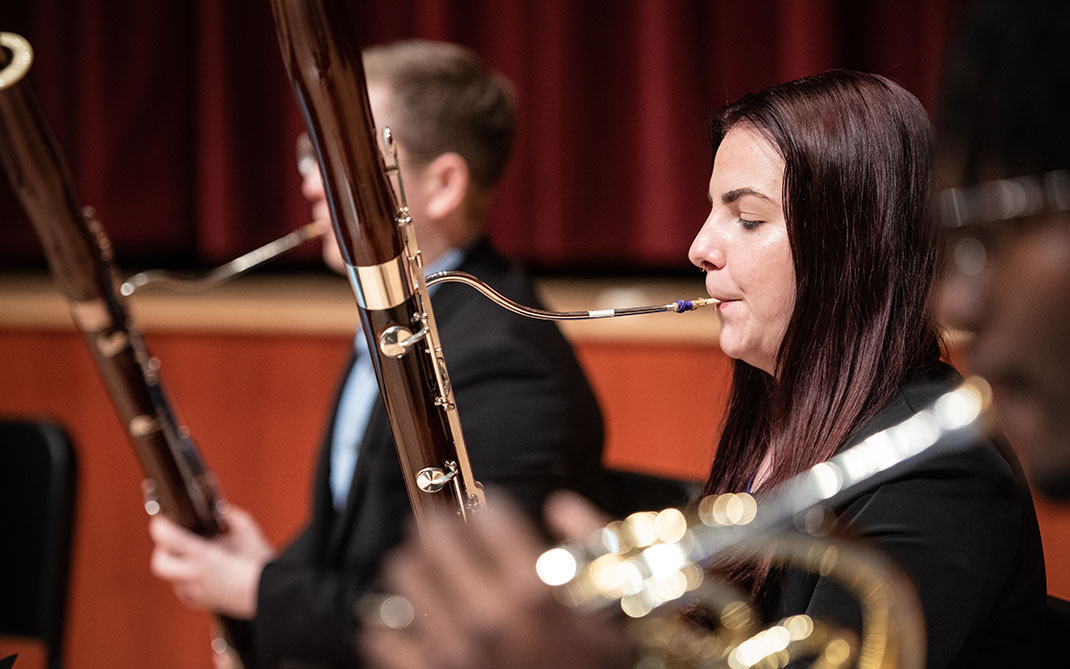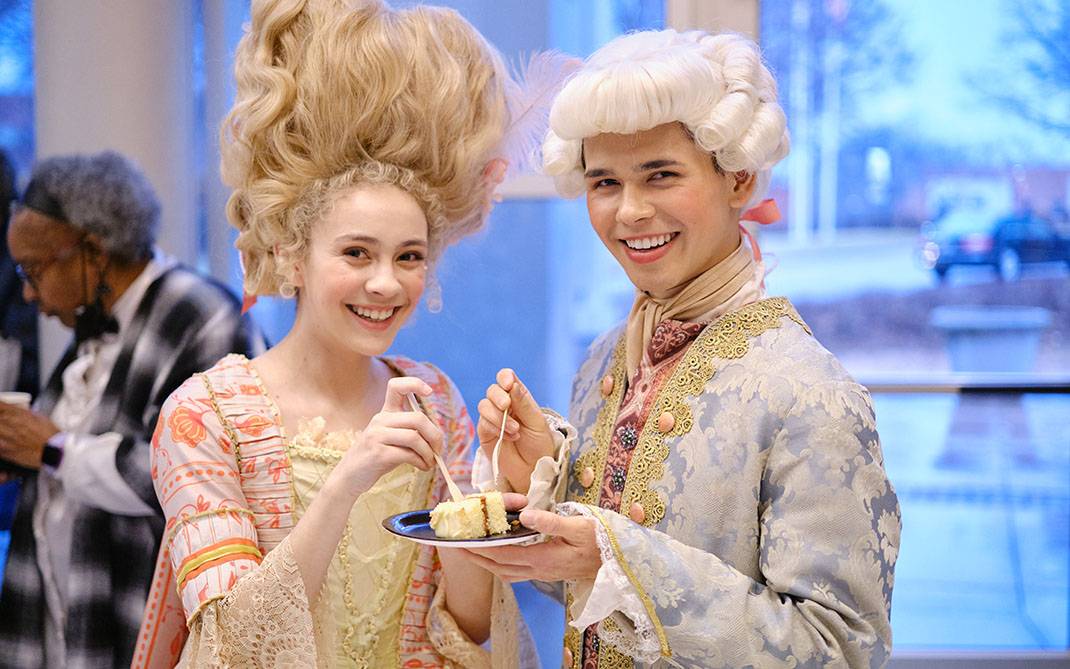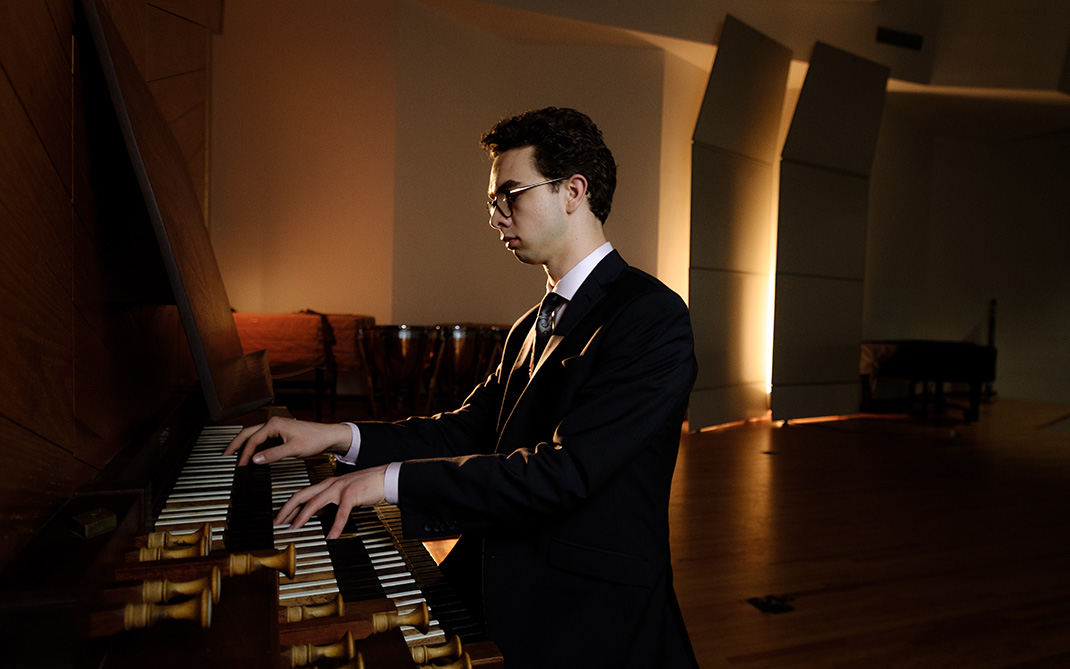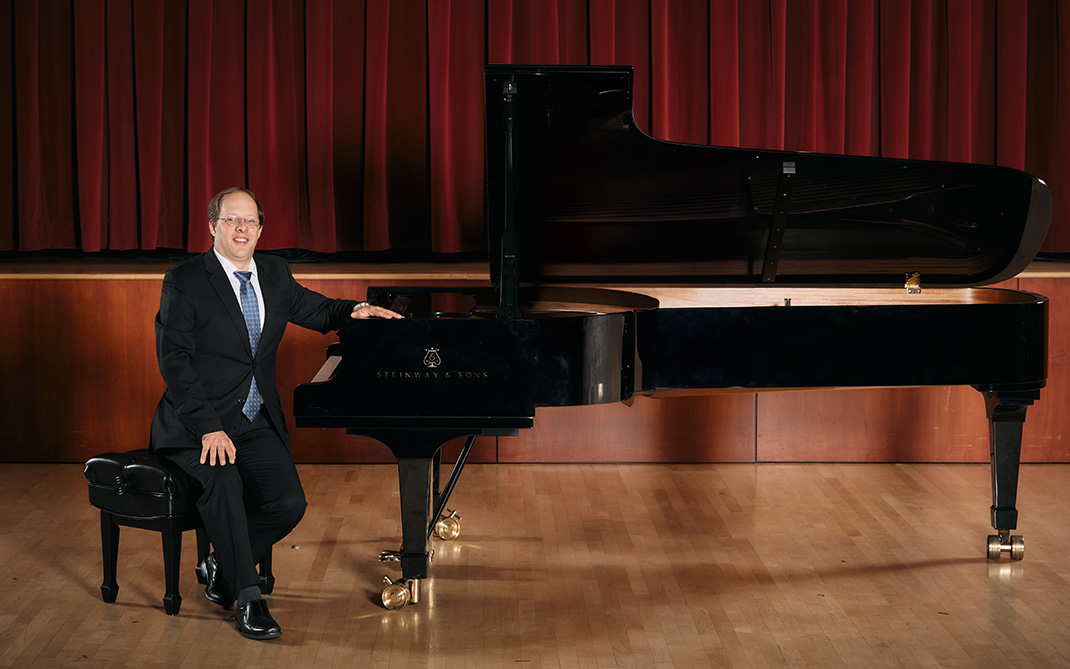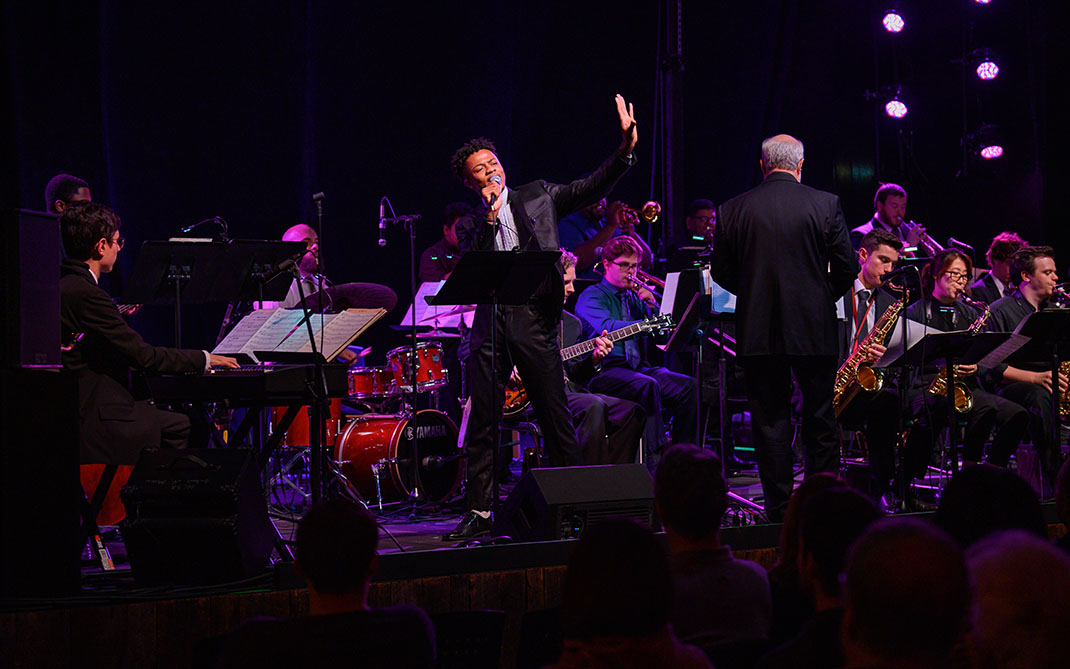Artist As Leader: Murielle Elizéon & Tommy Noonan
Murielle Elizéon and Tommy Noonan — partners in life, art and business — both have lengthy resumes that list an impressive array of dance, choreography and teaching projects with august companies from Mexico and Argentina to Australia and Slovakia. At first glance, it is therefore surprising that in 2014 they chose the small unincorporated village of Saxapahaw, NC (pop. 1,418 in the 2010 census) as the home of their latest artistic venture, Culture Mill, a performing arts laboratory.
As Murielle and Tommy explain in this conversation with Pier Carlo Talenti, however, Saxapahaw was the perfect place in which they could engender their vision: an organization whose artmaking was woven inextricably into the fabric of its geographic home. In their first full year of operation, for instance, Culture Mill launched “Trust the Bus,” an experience in which audiences boarded a 44-seat Bluebird biodiesel school bus and were then driven to an assortment of interdisciplinary performances throughout rural Alamance County.
Since then Culture Mill has welcomed many noted international artists in various disciplines to Saxapahaw for lengthy residencies; offered countless free or low-cost workshops and arts events to the community; and become a regular fixture at the prestigious American Dance Festival in Durham, NC, which commissioned one of their latest pieces, “They Are All,” a dance work created in collaboration with people living with Parkinson’s Disease, many of whom performed in its world premiere in 2019.
Murielle and Tommy spoke with Pier Carlo from Culture Mill’s studio, several weeks into the COVID-19 lockdown.
Choose a question below to begin exploring the interview:
- Could you describe how your training and practice as dancers and choreographers with international careers led you to create an arts lab in little Saxapahaw, NC?
- Are there any tools you learned as dancers and choreographers that are particularly relevant to leading an institution?
- Tommy, you recently wrote this really galvanizing piece in “Indy Week,” which is your response to COVID-19 and how you propose artistic institutions might use it as a turning point in the way they operate. In this think piece, you put forth Culture Mill’s ethos as a possible model. Can you summarize what that ethos is?
- You mentioned practices of sustainability. What does that mean for you?
- How are you sustaining your co-leadership, both as a family unit and professionally? How has that developed over the years, co-leading a business?
- Imagine yourself coming of age as an artist in this very scary period where, I think, it would be a very scary time for a young person to be considering her artistic future as a dancer or choreographer. What advice would you give that young person now?
- Epilogue
Pier Carlo: Could you describe how your training and practice as dancers and choreographers with international careers led you to create an arts lab in little Saxapahaw, NC?
Tommy: I feel like there are many layered answers to that question.
Pier Carlo: I bet.
Murielle: How did we land here? There are many layers. I will try to say some of them, and then I’m sure Tommy will have another version of that, because everything that we do is a version of our two approaches, of course, of our combined approaches.
The fact that we landed here came with a really big need after working for many years in different countries in Europe as choreographers and dancers in fixed companies, in city theaters and also as freelancers. We wanted to have our work be relevant to the place where we were living. It was really rewarding to be in different places, but we could not see the impact that we were having with the work, because you do a guest project and then you go somewhere else.
It was not easy to find the right place at first, because I’m from France. Tommy is from here. Visiting here, we noticed that there was the possibility to build an organization from the ground up, using all the tools that we have developed as choreographers, dancers and artists along the years to build something really unique in a place where it was not existing. And Saxapahaw seemed to be the place. Tommy grew up in the area. We were visiting here, and it looked like Saxapahaw could be such a place.
Tommy: Yeah. And to add to that, there’s a wonderful contemporary theater company in England called Forced Entertainment. They’re from Sheffield. Once I was attending a workshop with them, and they were talking about how they wanted their work to really be imbued with a sense of place. They didn’t want it to look like it was made in the lobby of whatever hotel they happened to be staying in but rather made in Sheffield. Living at the time in Berlin, we felt that there was a lot of transience to our work and to work coming and going, and so we also wanted a sense of place to imbue our work.
The idea for us was a kind of leadership that didn’t necessarily make everything we were doing about us but allowed us to guide a larger collaborative community around work.
Tommy Noonan
In addition to that, a lot of the structures of dance, even modern dance, in terms of the way it’s institutionalized and taught and how choreography functions, are very hierarchical. I think we were very interested in a much more collaborative approach, still recognizing that if we’re going to lead an institution, there’s some sense of hierarchy there. But I think that the idea for us was a kind of leadership that didn’t necessarily make everything we were doing about us but allowed us to guide a larger collaborative community around work.
Murielle: Yeah. And if I may add to that, maybe you’re familiar with Argentine tango. I am a tango dancer and a tango teacher also. For me, it was a big inspiration into the embodiment and the relationship between following and leading, which is really interesting in tango. Practicing has helped me to clarify what it means to lead and what it means to follow and the fact that leadership for me is a big act of listening. You cannot lead when you don’t listen. So there is this idea too, this attitude towards leading that comes with all kinds of practices of listening.
Pier Carlo: You mentioned tools that you learned as dancers and choreographers that you wanted to use towards this organization. Active listening is clearly one of them. Are there any other tools you learned as dancers and choreographers that are particularly relevant to leading an institution?
Tommy: I think one thing that is proper to the creation of contemporary dance and theater in the ways that we have practiced it is that you are constantly in a process where you are searching through the unknown or the half-known. You are sort of groping around a dark room, revealing things as you are in process. I think that that approach to creative process has also become our approach toward leadership, not necessarily turning out the lights and just groping around and not knowing what we’re doing but being uncomfortable with being somewhere between what we know how to do and what we feel or we intuit or where we are following our interests.
Murielle: Being a dancer and a choreographer promotes another kind of knowing that is maybe not so much intellectual, the idea that knowing something is to be able to enunciate it and clearly talk about it. In a dancer’s body, knowing is much more complex and layered. We utilize this intuition, this other kind of knowing, paired with the intellectual understanding of a place.
Tommy: When one approaches leading an institution, even if it’s a small nonprofit, from the point of view of that intuitive kind of listening in a different way, the being comfortable with the half-knowing, I think what ends up happening is that programs become much more dynamic and much more collaborative than if one had a whole design and prescription for the entire program and then went forth and implemented it in a classic leadership style.
Murielle: That was really interesting when we started, because we were looking for the model that we wanted to develop. Of course, everybody from the outside was like, “Well, you need to have a clear business plan.” We were working toward that. There were some things that were clarifying in some ways, and yet something was missing and we couldn’t put a finger on it for a while. Then we realized that our model was emergent and that we couldn’t just apply an existing model to it. We were actually on the verge of creating something new, and so we couldn’t just rely on existing models.
Pier Carlo: Tommy, you recently wrote this really galvanizing piece in “Indy Week,” which is your response to COVID-19 and how you propose artistic institutions might use it as a turning point in the way they operate. In this think piece, you put forth Culture Mill’s ethos as a possible model. Can you summarize what that ethos is? And also, since you wrote that piece several weeks ago when you were just entering lockdown, I’m wondering if you’ve had more clarification since.
Tommy: Yeah, well, definitely, because we’re all in a very fluid, evolving situation. I think the first thing for me to express about this piece is, how do you propose a critique of a system in which people are legitimately struggling and really needing help? We are in a pretty privileged situation to be stable. So part of it is that we look at ourselves right now at Culture Mill and we realize that we have a paycheck each month. We’re able to eat. We’re able to function. We’re able — even though we lose revenue — to continue our programs in some sense. And so a question for me was, why is that? What are those practices that we have managed to find and put in place that have allowed us to remain sustainable right now?
I think that the answer to that is really myriad. Part of it is about visioning large projects in which we can go after large amounts of money as a nonprofit and pay ourselves, prioritize paying ourselves a salary, and then also leverage and develop a whole system of community support through Patreon, through sustainer models, based around the fact that what we do isn’t just about our work. It is not just a company model where we want to create our work and we want to sustain that. Part of what we do is we look at not only the creation of our work and our artistic orientation guiding things but how that can also be beneficial to the community through linking programs with non-arts sectors.
All of this is a whole … if it were a portfolio, it would be like diversifying our portfolio, diversifying our revenue streams, but also going after major funding.
Pier Carlo: Because Culture Mill has programs that are tangential to dance, right?
Tommy: Absolutely. They’re really linked for us to embodied arts, immersive arts, performance-based arts, but totally tangential to dance, even though we’re dancers.
If there’s one thing I want to say that I’m seeing in relationship to this article and this sort of thought is that there is a moment of opportunity in this for the arts in a whole systemic way to really not only look at the arts. It’s the whole gig economy. It’s our whole American approach to this gig economy, which is obviously problematic in terms of sustaining a workforce.
We need to do a few things. Institutions need to understand how they can better give money directly to artists and place more trust in artists being able to capitalize their own communities and networks effectively. At the same time, artists need to really work on their skillsets and their habits and their practices of sustainability and not reproduce the same culture of exploitation within their own networks by hiring each other and budgeting irresponsibly without paying one another.
This whole systemic awareness needs to be raised about there being much better ways to do this. It needs a comprehensive approach from large institutions —
Murielle: To individual artists.
Tommy: To individual artists and their actions.
What I really hope is just that the thinking can go beyond, 'How do we remedy this until it goes back to normal?' It’s more like, 'How do we keep people going until we go forward into a more sustainable and equitable system?'
Tommy Noonan
Now for the final part of your question. This is evolving. I mean, there are all sorts of things emerging, different ways that artists are making up income and different initiatives to help artists. What I really hope is just that the thinking can go beyond, “How do we remedy this until it goes back to normal?” It’s more like, “How do we keep people going until we go forward into a more sustainable and equitable system?” That’s my hope, that we can all think that way in a multilevel approach.
Pier Carlo: You mentioned practices of sustainability. What does that mean for you?
Tommy: Well, it starts really at a personal level of how we lead our lives, I guess.
Murielle: Sustainability, like in the matter of finances, of course, but not only. Most artists are struggling financially, but also at an energy level, they are like we are. We are always exhausted. We’re always overworked.
Pier Carlo: And you’re parents as well, right? In fact, you’ve had to homeschool your child recently, right?
Murielle: Yes.
Tommy: Yeah.
Pier Carlo: That’s another level of exhaustion.
[They both laugh.]
Murielle: That’s right.
Tommy: It sure is.
Murielle: It is indeed. And so, the practice of sustainability, looking at all of that, of course it goes with the systemic change — we cannot do one without the other — but we need to start somewhere.
So maybe the individual change that Tommy is speaking about is a place to start. How do we budget not only our projects but our life? How do we budget our time? How do we not over-involve ourselves with this scarcity mindset where it’s like, “I need to get as many things as possible or I’m not going to survive.” This actually affects the quality of the work. It also affects the credibility of the work for the general audience and for patrons and for the institution. How do we claim what we need as artists and claim that we know what we need?
Tommy: And we need to understand labor, our own labor and the labor of others, as a finite resource. Because we treat it as an infinite resource where we’re like, “You know what? We don’t have enough money, but we can just keep throwing labor at it and not worry about the consequences of that.” And that practice is one that needs to stop in order to foster sustainability. It’s like, “All right. We need to consider the amount of labor that’s required for the scale of our projects and make sure that labor is compensated adequately.” And that’s a step toward sustainability.
Murielle: And there’s a kind of discipline to that. Where we met and where we came from, meaning Germany, and France, Europe, informed that way of thinking.
Tommy: Yeah.
Murielle: From the beginning when we moved here — I’d heard all the stories about how artists were living — I was like, “This is not what we’re going to do. We’re not going to do that.”
You take care of yourself; you take care of others. That’s how you should do it. It’s not a matter of compromise. We don’t compromise that.
Murielle Elizéon
Artists need to be paid. That’s the first thing. And it shouldn’t only be a sacrifice kind of compromise. Because some artists pay maybe their collaborator but then they don’t pay themselves. Then they decay pretty soon, and they get bitter, and they don’t do any work anymore. So we pay ourselves, and we pay others. You take care of yourself; you take care of others. That’s how you should do it. It’s not a matter of compromise. We don’t compromise that.
And that means that we need to understand how to do it, because it’s not in the system and a lot of people do it without being paid. Really it’s kind of a discipline to have.
Tommy: And the final thing I want to say about that is that one thing we can do as well, especially as artists, is recognize that we need to have a broader sort of political consciousness of the fact that those dynamics within our arts sectors need to be in solidarity with the dynamics of the larger economy and issues of labor and of poverty and of inequality and of power that exist broadly. If we can start to see ourselves and our own issues in solidarity with dynamics involving the distribution of wealth and poverty in other sectors of the economy, that is also a step toward thinking more broadly about sustainable solutions to our difficulties.
Pier Carlo: How are you sustaining your co-leadership, both as a family unit and professionally? How has that developed over the years, co-leading a business?
[They laugh.]
Murielle: That’s an interesting question. It’s an ongoing question for us.
Tommy: Yes. It is.
Murielle: That’s how we began. When we met, we actually had a few years of practice of that with no bigger consequences, because we were working for other structures, other institutions. We were leading projects together or working in each other’s project within a bigger institution. So that had been a way to practice leading, coordinating together.
So when we started Culture Mill, we already had a way to understand how that functioned, our different skills and how we are really complementary, both of us. It’s not always easy, right? For sure.
Tommy: We can have very different styles.
Murielle: We have very different styles.
Pier Carlo: What are those styles?
Murielle: Well, I will say that I take a long time — I don’t know if I would say a long time, but in comparison maybe — a long time to sense where the priorities are before starting something. I’m mapping a lot. And I’m making connections and seeing the bigger picture a lot before engaging in a single action.
Tommy: Yeah. And in a way I sometimes can gravitate towards hyper-efficiency, organization of information, structuring, analyzing, translating. I think we both have abilities in those different ways.
Murielle: And then I am also inclined to take a long time to develop relationships.
Tommy: Yeah.
Murielle: And sustain them.
Tommy: Yeah, which is so valuable.
Murielle: I have a longer arc of time, doing that, not necessarily giving in. That has been a big crusade of mine, the sense of urgency all the time, because that shapes the work in a way that I don’t want the work to be shaped.
Tommy: To resist the sense of urgency all the time.
Murielle: Yeah.
Pier Carlo: You’re creating very deep relationships, which I’m guessing also creates a level of trust with your funders — current or potential — with your collaborators and with your staff, right?
Tommy: Absolutely. We started to understand relationships as a resource, not in a cynical way — like something that could be mined — but more by recognizing the fact that if we invest in relationships, that’s actually the best thing that we can possibly do toward really sustaining the work and also the possibilities for not only funding but the emergent doors that open and pathways that reveal themselves.
Murielle: Yeah. Partnerships, collaboration, funding, all of that is weaved together. That’s the thing: to understand the weaving, to be with the weaving.
Also, if we talk about relationship, we talk of the body ... We are dancers and choreographers, and we start and we continue and we are with the body all the time. So when we build relationships, there is, even when we don’t see the person, there is this sense of the body, of the history of someone that we talk to.
Murielle Elizéon
Also, if we talk about relationship, we talk of the body. We didn’t mention that, but that’s also one of the big starting points, right? We are dancers and choreographers, and we start and we continue and we are with the body all the time. So when we build relationships, there is, even when we don’t see the person, there is this sense of the body, of the history of someone that we talk to. They come with their body, with their body-mind, with their history, and we try to find that space in between us of relating.
Tommy: Yeah.
Pier Carlo: So this is a sense that you’ve developed. It’s a sense that I, as a non-dancer, wouldn’t automatically have, the sense of the ... what did you call it? The body-sense?
Murielle: It’s an embodied presence to the moment of making relationship, I would say.
Pier Carlo: I see.
Tommy: I don’t know the figure, but some crazy percentage of our communication is physical communication. And it actually takes place non-verbally. Which poses a whole difficult... it’s something that’s really difficult in these times when we’re not physically together.
Murielle: There is the audio cue. A lot that we can detect comes from the body, even now talking to you, right? Like the tone of your voice. Talking to you, hearing you is body, even if we don’t see you here.
Pier Carlo: One of the questions I usually ask at the end of an interview is, what advice you wish you had received when you were becoming artists leaders? But now, given what’s going on, I’d like to ask: Imagine yourself coming of age as an artist in this very scary period where, I think, it would be a very scary time for a young person to be considering her artistic future as a dancer or choreographer. What advice would you give that young person now?
There are no actual rules to how this whole thing is done. Make something up that is humane and equitable, and learn everything you can. Seize the opportunity to build something, because this is a moment where things are collapsing.
Tommy Noonan
Tommy: I would say, I know it’s scary. And I know it’s uncertain. But you have an opportunity, being unburdened with all the ways that the rest of us were told it had to work. So please seize this moment and imagine radically how you would want a system to work for yourself. And work toward that. There are no actual rules to how this whole thing is done. Make something up that is humane and equitable, and learn everything you can. Seize the opportunity to build something, because this is a moment where things are collapsing.
Murielle: I would follow that and say, yes, it is scary. And yes, it is scary. Keep listening and weaving like what you intend to do and what you see. Keep continuing inner and outer conversations for your artistic life. Continue to do that, even when it’s scary, especially when it’s scary, continue the inner conversation and the outer conversation. Keep on listening to the work itself and to what nourishes the work. The container and the content, the content being the work and the container where you do the work. Continue to listen to that and have conversations between container and content, weaving that constantly.
Pier Carlo: Is there anything about your leadership that you’d like to share, anything that I might not have thought to ask?
Tommy: This is really specific to us, but it comes back again and again, as Murielle said, to the body. We have meetings more and more where we dance while we meet.
Murielle: [Laughing] Yes.
Pier Carlo: Just the two of you in the meetings, or are there other people?
Murielle: There are sometime other people with us, depending on the other person. We try to adapt and not to scare people too much.
Tommy: Like in terribly formal meetings with large institutions, for example. But we do sometimes invite others to move as well. We also have, instead of brainstorming sessions, what Murielle has called body-storming sessions where a lot of our visioning and designing programs and budgeting, all of these things, happen non-verbally through a writing-and-movement process.
Murielle: We start with that, at least.
Tommy: We start with that. I think that the quality of thinking and of collaborating is so much better when we are in our bodies through these structures of ways to be in our bodies. That is at the root of our leadership style that we’ve developed, finding these ways that our thinking process, our visioning process, our collaborating process, all comes down to being in our bodies and letting that bodily experience lead.
Epilogue
The need for community, connection and collaboration is more urgent now, during both a public health crisis and a moral reckoning for the country, than ever. Lessons we can take from our conversation with Murielle Elizéon and Tommy Noonan include:
- Keep learning. A leader’s ideas are only limited by his or her knowledge. Curiosity is limitless, however, so keep exploring. Sharpen your hunger to know more.
- Lead through community. It may sound like a cliché, but it’s true: Think globally, act locally.
- Impact systems. Changing minds, beliefs, established norms and cultures requires understanding and altering webs of underlying systems.
- Choose abundance. The belief in scarcity fuels a limited outcome and vice versa. Do not opt for limits. (See note above about curiosity.)
- Listen on multiple levels. We know we can listen with our ears, but we can also listen with our hearts, our whole bodies and our gut instincts. Open all of your artistic listening/absorption systems to possibility.
